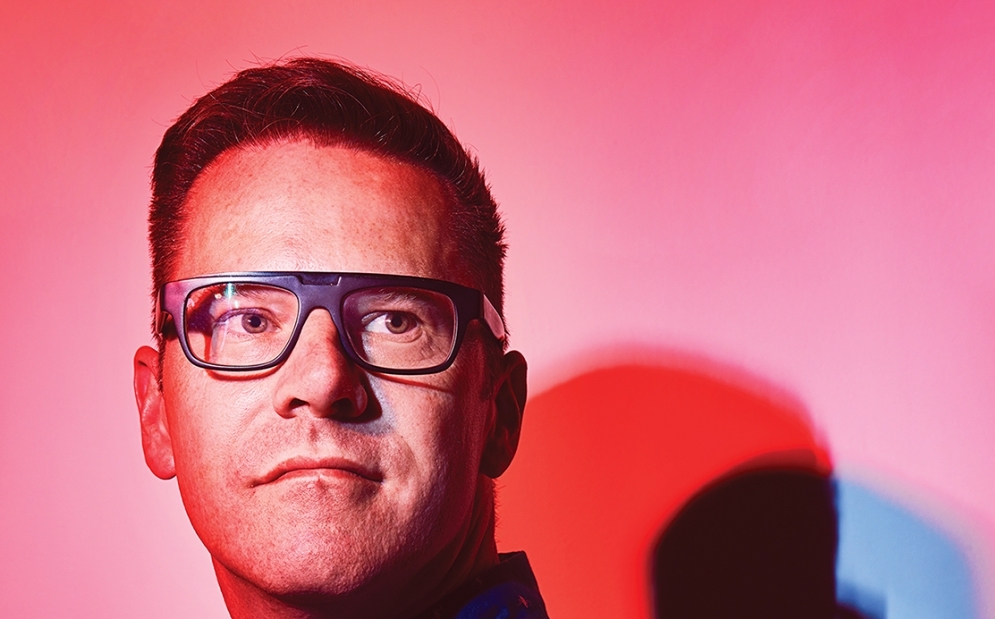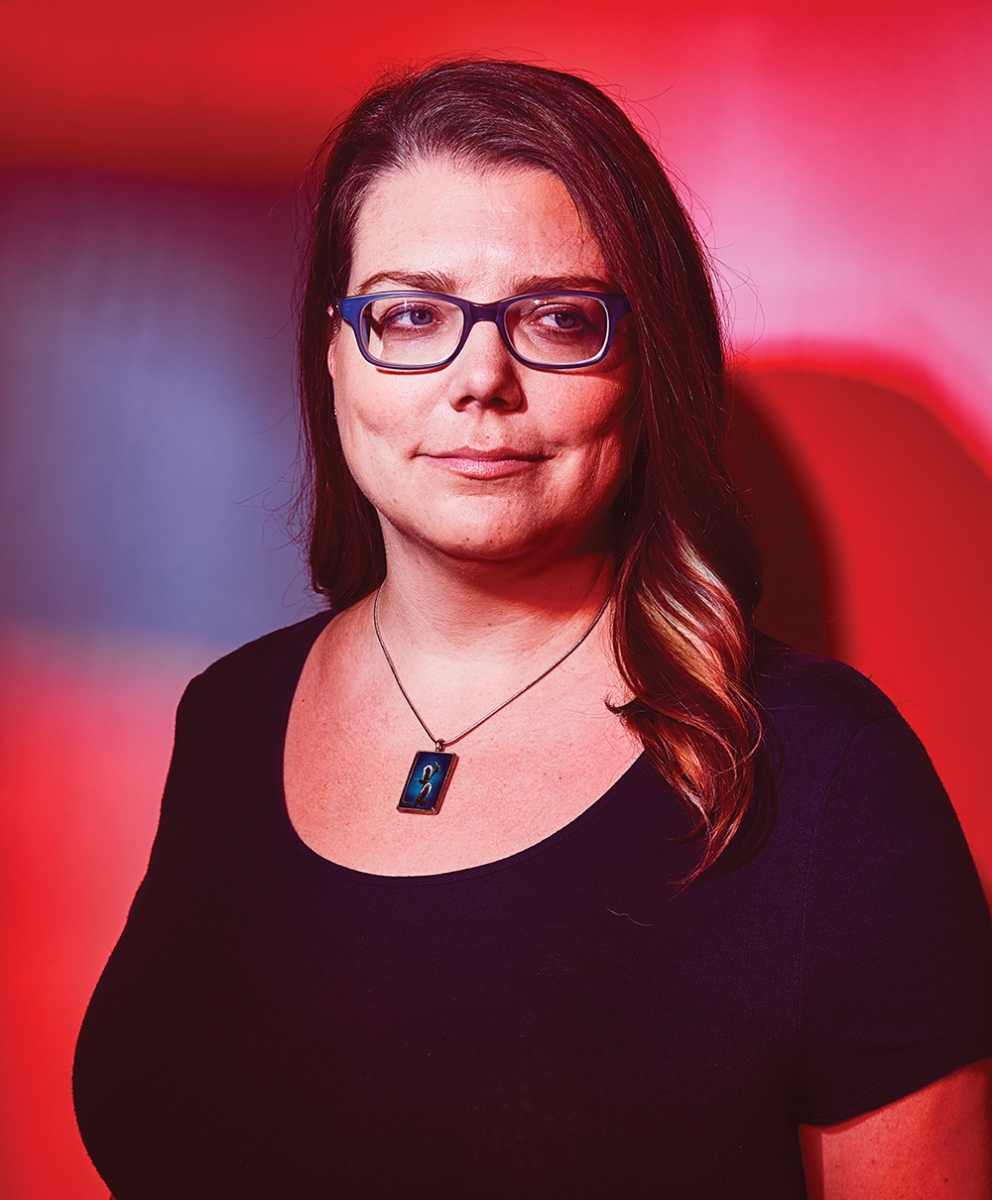
Everyone thinks that robots are coming for their jobs, but who among us hasn’t admired or used AI – like Amazon Alexa and Google Home – in other areas of our lives? (That Google Duplex video, where AI convincingly has a phone conversation with a human, is quite something.)
While the use of AI can change which roles are needed, it cannot take out the human workforce completely. “You can’t do anything without human involvement,” says Anna Koop, the director of applied machine learning at the Alberta Machine Intelligence Institute (Amii). “You need to combine machine learning with really excellent human knowledge. We desperately need humans involved still. You still need to manage an AI. You wouldn’t hire an expert and leave them alone in a room without ever checking in. So don’t expect that any AI system can just operate blindly without ever being managed and monitored. There’s one thing it can do really well, but it’s usually a lot smaller piece than people think.”
If you ever wished someone would just give you the answers, turn to AI. A robot can’t identify problems, but it can give you solutions. Businesses that are collecting data already can make the leap to integrating AI, those who aren’t collecting data need to start before incorporating most AI; it’s like applying a recipe and data are the ingredients. “You need good quality data to use AI, you need to know what questions you’re asking to get the right data, and a well-defined business problem,” Koop says. “A lot of people are collecting a lot of data, but nothing is being done with it.” If you don’t know what it is you need, or how to get it, there’s someone (a real, breathing human) in Edmonton who can help.
AI Fits All
AI isn’t just for large companies with large budgets, yet its applications are also sophisticated enough to accommodate the needs of large, complex organizations.

“Customer service is one of the bigger touch points for a business to be able to use AI, even small businesses can use AI in that field,” Sonu Jaswal, ATB’s Director of Reputation and Brand, says. “And they can probably get an out-of-the-box solution versus building something custom.”
AI is ultimately about making work easier. “I wanted to build J.A.R.V.I.S. for business,” Dave Damer, founder and CEO of Testfire Labs, says of his product, Hendrix, with Tony Stark’s computer network in mind. Hendrix lives in your phone and, if you ask it to sit in on a meeting, it will listen intently and provide a voice-to-text transcription – even in non-ideal, noisy environments like coffee shops – but the most proprietary feature is that it can be programmed for specific-use cases to identify action items and other recommendations based on vocal cues. “I had a lot of discussions with our business clients [previously at ThinkTel, which he founded] over the years about, ‘how do we make our meetings better, how do we work effectively with a [geographically] distributed team?'” Damer says. “AI can go beyond what a human can capture and do it consistently across an organization. That’s what Hendrix is.”
Hendrix is meant for virtually any industry, and Testfire Labs’ clients comprise many traditional industries including NAIT, Clark Builders, PCL and the City of Victoria. “Clients learn about [Hendrix] across all verticals – education, finance, construction – and say ‘oh wow, we could really use that to capture this,'” Damer says. “They’ve identified a problem and Hendrix is the solution.”
Robots at Work
SAM, billed as a real-time “knowledge engine,” uses AI directly in its business model to merge the strengths of traditional and social media. The data is there – lots of it – but having a journalist sift through millions of posts and a few trolls is time-consuming and resource-intensive. SAM is an AI that can identify breaking news situations by combing through social-media posts, and provides information to newsrooms around the world so journalists can work on the stories.

“I’ve always been extremely fascinated in, and really just a firm believer in, the value of things like Twitter feeds where people are giving first-hand accounts of events around the world as they’re happening,” founder and CEO James Neufeld says. “Coming to the realization that actually [a news organization] can’t be everywhere, doesn’t matter how big it is, it doesn’t compete or compare with the number of social-media users who can document a lot of news events all the time.” Notably, SAM detected the van attack in Toronto and the active shooter situation at YouTube headquarters in San Francisco, both earlier this year, but Neufeld says the AI can be used by non-news clients as well that are looking for specific, not necessarily breaking, content.
The building of SAM required Neufeld and his team – the company started in Edmonton and now also has an office in London, England – to identify the “DNA” of a breaking news story. SAM looks for credible sources – no fake news here – and has learned to discern specific geographical information. “The AI has to understand that [airport code] #yeg refers to a city, and we might know that as locals but the rest of the world has no idea,” Neufeld says. “But then you go to Calgary and [their airport code] #yyc isn’t used as much. Every location has their own local colloquialisms for how they refer to names and locations. So these are challenges AI has to solve on a global level. So this is something we’re proud of, that the AI can understand how local people describe events in their cities and in their regions around the world.”
The City of Champions and its love of the Oilers provided a unique problem for the AI to overcome. “What’s interesting about us being a hockey nation is often we’d trigger an alert for the phrase ‘shots fired,’ and it sounded like a very dire, terrible situation. But, of course, there are a lot of people talking about shots on net. So it had to learn these things.”

But My Company Isn’t a Tech Company
Your business model doesn’t need to be based in AI to use AI. Connection Silicon Valley’s CEO and founder, and Edmonton expat, Joanne Fedeyko says: “We say tech-enabled, we really feel any company today is a tech company.”
ATB – whose headquarters are in Edmonton – is a large, mature organization with over 5,000 employees and a sizable budget, yet it’s in a very traditional industry that is not tech-focused. It has been working with emerging technologies to transform its business. “We know we’re in an industry that has to evolve,” Jaswal says. “We can’t just sit by and be a bank and keep that traditional model. How can we move ahead and be one of the first in the industry to add more value? How do we do things that are really un-bank-like and help us connect to Albertans?”
One of the changes ATB has made is the addition of a virtual banking assistant. When customers chat with the bank via Facebook Messenger, they’re chatting with an AI bot – and the more they use the tool, the more data they provide, the smarter the bot gets and the better it can assist. Next up, ATB is looking at how to use AI predictively. “If you have an entrepreneur, they’ve started their business, they’re really focused on their business and rapidly growing it, and they may not come to a bank when it’s the right time – they’ll come and ask for a loan they need in two or three days,” Jaswal suggests. “We start to look at patterns and predict when someone like an entrepreneur is going to go through a business change and supply them with solutions and expertise. We’re starting to look at some smart, predictive modelling. Something that isn’t going to creep out a customer but something that helps us provide the just-in-time, delightful situation.”
Still not convinced? Talk to the team at AltaML. Founded in Edmonton by Cory Janssen, AltaML helps startups take the next step to integrate AI and ML – Janssen can even build a custom product to suit specific needs.
I Still Have No Idea What You’re Talking About
Sign up for Demystifying Artificial Intelligence, a one-day course offered through the University of Alberta’s Faculty of Extension. If you run a business or are part of its technical staff and are curious about AI but aren’t sure where to begin, instructor (and Amii researcher) Anna Koop can help. As the name suggests, Koop will explain real-world applications of AI, discuss the types of data and research needed to start with AI integration and guide participants in developing AI projects of their own. “It’s not high-level technical talk, Amii is focused on practical applications, how they can take findings from academia and make them useful for businesses,” Koop says. “The first step for any business is to try to articulate what you want, what decisions are being made, what information is being processed. Understand the problem well.”
I Have an Amazing Idea, Now How Do I Meet Mark Zuckerberg?
One step at a time, the first step being Edmonton’s own Startup Edmonton. This co-working space solely for tech-centred startups currently houses more than 60 companies and works with more than 900 employees across a variety of programs. When you’re ready for the next step – any point beyond the “I have an idea” phase – hop on a direct flight from YEG to SFO and get to the Canadian Landing Pad in Silicon Valley. This new co-working space – founded by the Edmonton Economic Development Corporation with the help of Fedeyko – is free for Canadians to use, and offers everything from meeting space and Wifi to workshops and networking events with established tech companies.
“It’s really to help connect to Silicon Valley in a meaningful way so [Canadian companies] can build a network and that network can be used for customers, strategic partners, investment and, in general, to support their business as it grows, and support themselves as they grow,” says Fedeyko. “It’s not ‘I got a meeting, I got a million dollars’ right off the bat. It’s about that access, and the making of physical connections is super important. Beyond that it’s about making sure that companies take the Silicon Valley DNA and bring that back into their own organizations. That’s different for every company and different for startups versus corporations, but I truly believe that the way we operate in the Valley – waking up with that sense of urgency, a high sense of collaboration and partnership and willingness to support each other – those are two key components that make companies successful. If they bring that back in other elements ultimately it permeates into the company, to the people, to the city and the country.” Four Criteria for Working With AI
A company hoping to benefit from machine learning cannot approach AMii’s research team empty handed. General AI knowledge is a good start, but there are four crucial criteria needed to reap the rewards of the big brains at AMii (including the human ones).
1. Data
Without a collection of accurate data points – ad clicks, purchase records, manufacturing history – there is nothing for machine learning to work with (or learn from). It would be like asking someone to decipher an unknown text without our alphabet. The more precise and relevant the information, the more machine learning can mine for patterns and outliers.
2. Ground Truth
Once a robust database is in place, you need to label each data point, so machine learning knows what to look for. Manually teaching the algorithm what is and isn’t relevant is called its Ground Truth. A company wanting to predict whether a new customer will buy a particular product would compile purchase record data, and its Ground Truth would be identifying records showing purchases of that product, and records that are “not purchases of that product.”
3. Well-defined Problem
A company with a collection of well-labelled data would be a great candidate for machine learning, but to develop an algorithm tailored to that company’s needs, Amii researchers require a clearly stated problem. Something like: We want to predict which customers will most likely purchase a particular product based on their purchase habits.
4. Well-defined Objective
The algorithm then also needs a straightforward objective, usually a binary mathematical target, or something as simple as “increase sales of the product.” The better you can define your success metric, the better chance of machine learning hitting it. If a company already makes data-driven decisions, and has a rules-based computer system – or better yet, a human making decisions based on that data – there’s a solid chance Amii can train a machine to help make those same decisions. Whereas a company that has data, but doesn’t know what’s in it, doesn’t currently make decisions with it, and just wants to use machine learning, has a much steeper slope.
– Cory Schachtel
This article appears in the September 2018 issue of Avenue Edmonton









